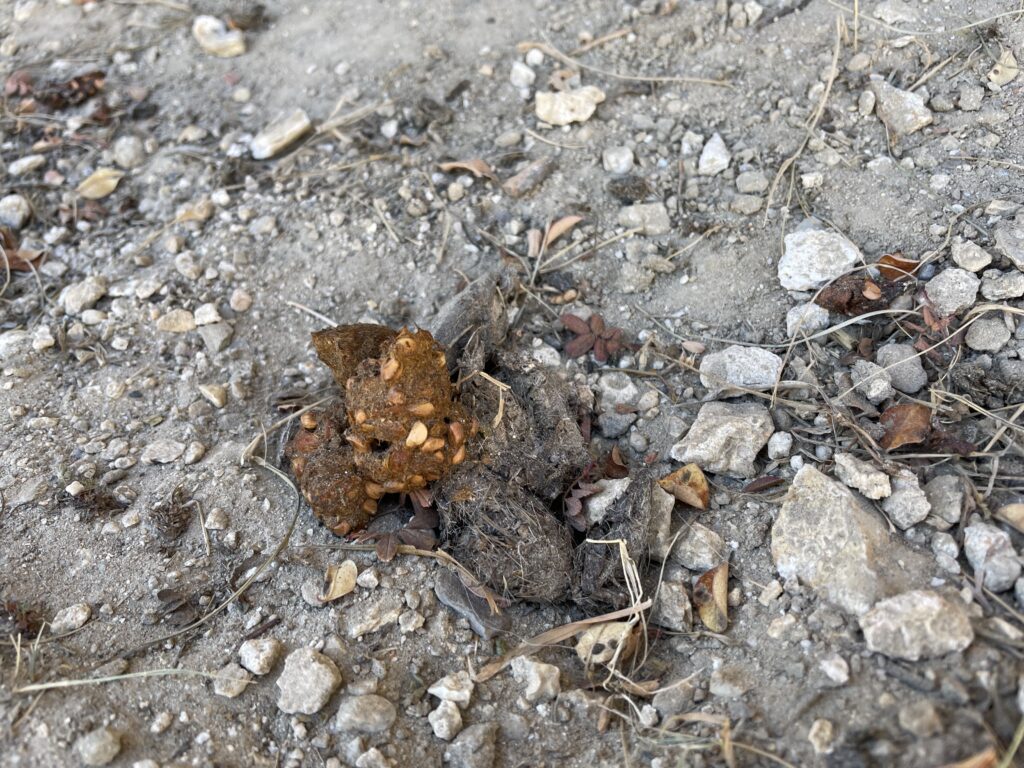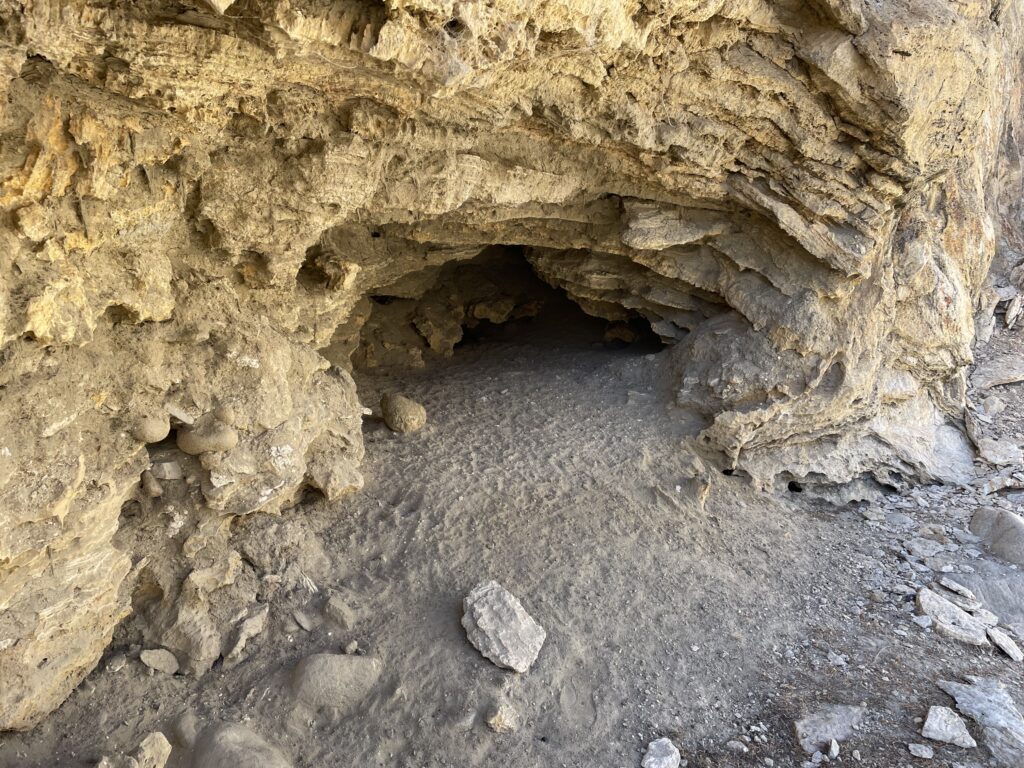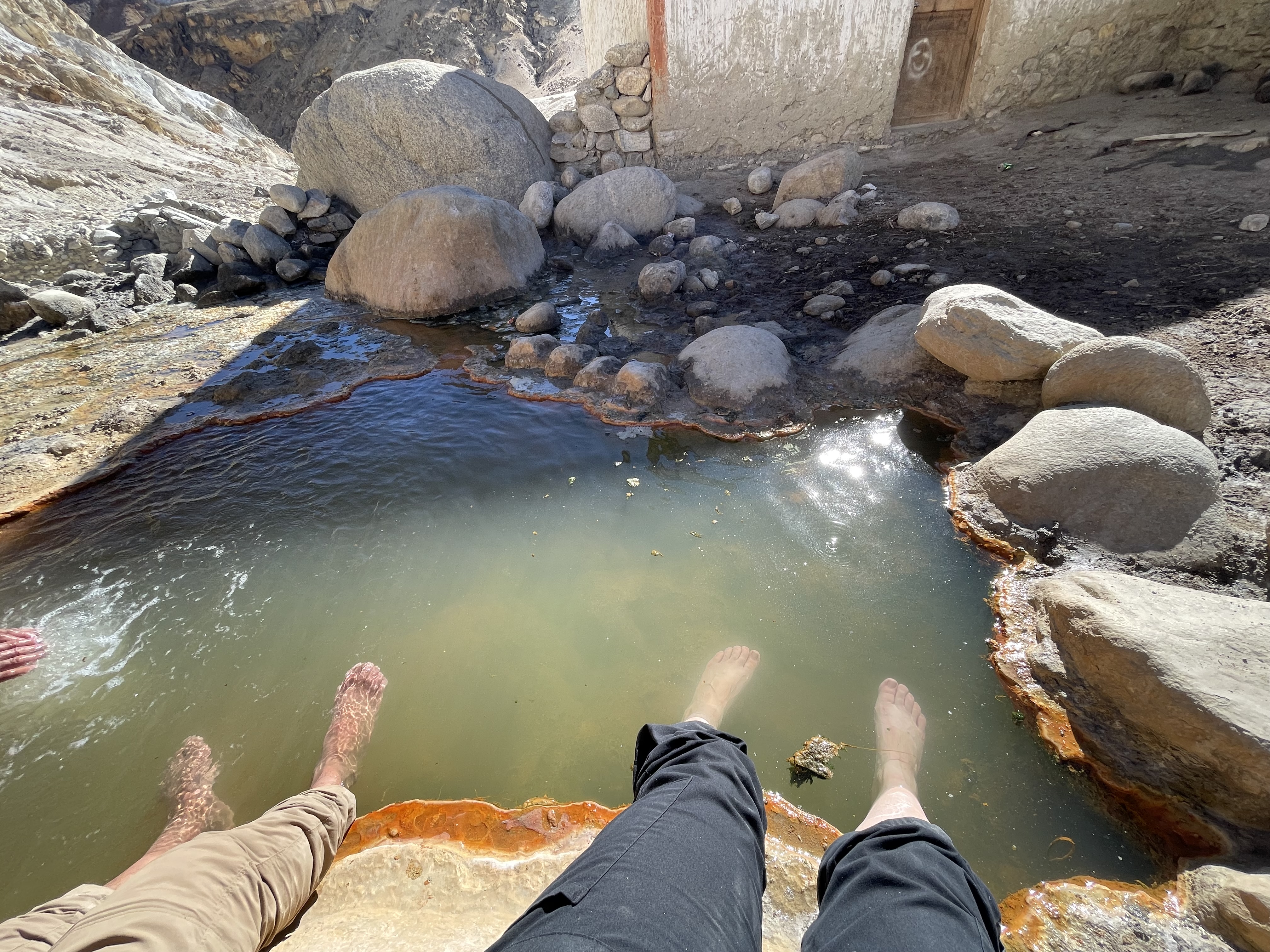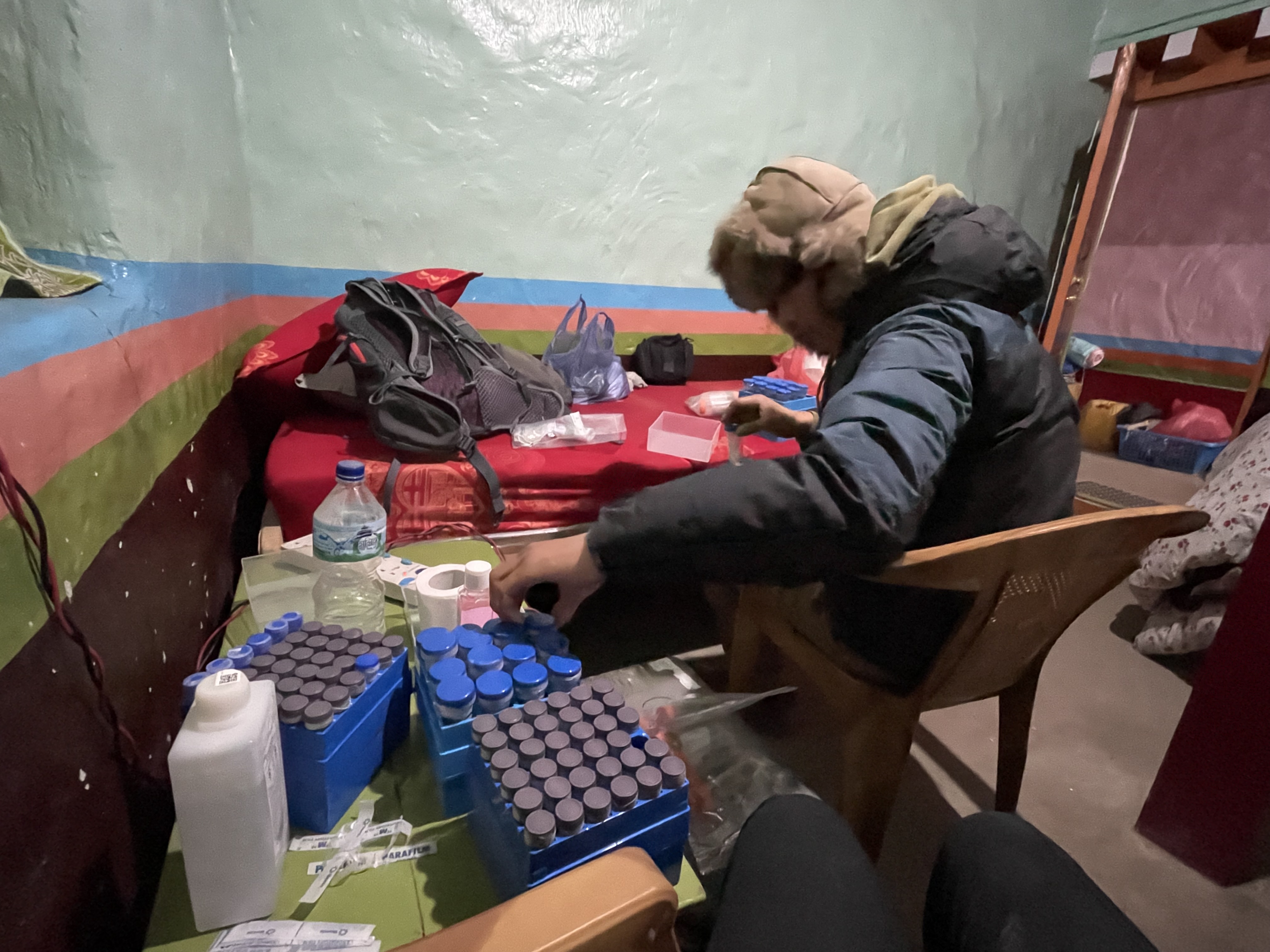I discovered while I was in Nepal, when they said we would be leaving at 7AM sharp and to be ready, they usually meant 9. I was always up and ready to go early (because I hate not being on time) and would end up drinking tea and eating and waiting for the others. I was on Nepal time. My OCD hated it, but the laid-back side of me went with it.
We had one day to collect snow leopard samples. Our little group headed outside of the city and into the territory of the snow leopard. We walked along a beautiful river, visited an abandoned cave monastery and looked high and low for scat. And we found some!

Over the day we collected 6 samples, which was a huge win, because we were uncertain if we would find anything. Why, you might ask. Well, for starters, we picked a bad time of year to do this. It’s winter and the snow leopard’s main diet of blue sheep have moved to other areas to find fresh grass and many snow leopards will follow them. The best time to get samples is in the spring and right before the monsoon season starts. Oh, the things you learn on your first foray into international field research. The area is also not where the highest concentration of snow leopards is on a good day.


I asked our homestay guide if he thought there would be other samples elsewhere that we should go looking for and he told me he was surprised we found that many. So, I was satisfied. After my trekking guide, homestay guide and I spent the day climbing through snow leopard terrain, we stopped at a hot spring on the walk back to soak our tired feet, before joining our other two group members closer to the town.

My trekking guide, Phurba, helped me organize the samples in my makeshift lab in my room at the homestay and after a short rest we headed back out to collect additional domestic samples. We managed to collect 13 domestic samples (a mix of horse, goat, dog, cat, and cow) and 6 “suspect” snow leopard samples (we would find out what they truly were in the lab). It was a success.
